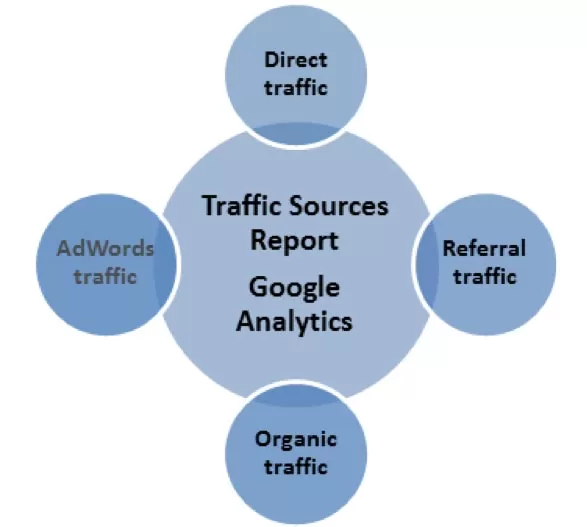Campaign tracking or tagging is a vital factor for every e-commerce and online business. You need to know exactly which campaigns affect traffic and conversions. Otherwise, there is no way you can succeed! Google Analytics will be used as an example to understand this process. Many of the concepts here can also be applied to other Web Analytics tools.
What is Campaign Tracking?
- Endless process: what you did right today is worthless if you do wrong tomorrow
- Configuration and metering: all your traffic is placed in the right areas using custom parameters
- Analyze and optimize: target and optimize the specific recommendations of a subset of your website visitors
- Traffic sources and results: direct the online marketing you spend to the best performing channels.
Default Traffic Sources
By default, Google Analytics can measure three or four different traffic sources:
AdWords traffic in a blur. For this to work, you need to correctly link your AdWords account to your Google Analytics account.

5 (Five) Variables
- Medium: use utm_medium to identify a medium such as email, affiliate, tbm (cost per click) (mandatory)
- Source: use utm_source to identify a source like google, zanox, pinterest(mandatory)
- Campaign: use utm_campaign to define a campaign name such as summer campaign(mandatory)
- Concept: use utm_term to identify keywords that drive traffic
- Content: use utm_content to distinguish between ads or links pointing to the same URL
- Tool: CPC is the highest level and refers to cost-per-click advertising.
- Source: This could be Google, Bing or another ad network based on CPC.
- Campaign: AdWords related, on-brand, off-brand, contextual, specific product, misspelling, etc. you can have a campaign.
- Term: Each campaign consists of different keywords related to that campaign.
- Context: If you are running an AdWords campaign, you may want to test two or more ad versions for CTR and CR optimization.
This will give you a strong foundation for campaign tagging and optimization.
Campaign Tracking URL
- Vehicle = tbm
- Source = bing
- Campaign = campaign monitoring
- Google URL Builder (if you only need to tag a few URLs)
- Create your own (Excel) table
- Search online for a campaign labeling table
My friends at LunaMetrics recently published a campaign tracking table that might be useful. Download for free!
Test Your Links
- Click on a redirect link that leads to your website and check the utmcc parameter to see if the campaign parameters are preserved (use GIF Request Parameters or GA Debugging tactics for this)
- Click on a link that redirects to your website and check Google Analytics in real time (a great option for the less tech-savvy)
Best Practices
- Schedule an internal meeting: The bigger the company, the more people it probably involves. It is important that everyone has at least a basic understanding of campaign labeling.
- Use naming conventions: Things start to go wrong if one person uses email and a different email for a variable environment, configure it correctly from the beginning.
- Use the right tools: build your links using a spreadsheet or Google URL Builder
- Don’t overdo it: If Google AdWords and Google Analytics are connected, you do not need to tag your AdWords URLs
- Use only the campaign variables you need; sometimes it is enough to use tools, resources and campaigns
- Media, less is more; if you have hundreds of different media, it will become very difficult to analyze and optimize to the highest level.
- Make sure you submit personally identifiable information (PII) in a campaign tracking parameter.
- Set Google Analytics filters to aid processing; for this specific purpose, it is recommended to set campaign parameters to lowercase.
We recommend applying the same filter to the other four campaign parameters.

